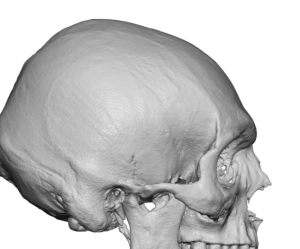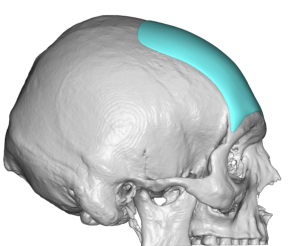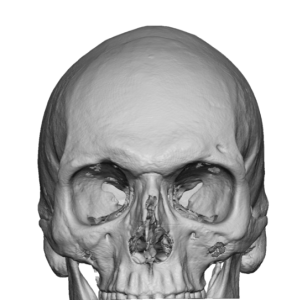Background: The male forehead has several distinct features from the projection of the brow bones inferiorly to the prominence of the temporal lines at its sides. Its largest feature, however, is the slope or angulation of the broad forehead surface. Unlike females where a more straight or close to zero angulation slope is desired, men have a more backward inclination to their forehead. If it is too straight the forehead can appear to be bossed or too prominent. If it has too much backward slope it can appear Neanderthal-like with apparent over projecting brow bones.
In augmenting the male forehead there are two material options, bone cements and custom implants. Bone cements are the historic material that has been used but it has significant aesthetic limitations including the need for a long scalp scar to properly place and shape as well as the lack of precise control of the amount and shape of the augmentation. There are also some PMMA bone cement patients that I have seen that many years later develop a reaction to the material. PMM bone cement can also cause bone erosion underneath the material which can be an issue over the frontal sinus area. Hydroxyapatite or HA bone cements have none of these issues and is the superior bone cement augmentation material. But its limitations are its tremendous cost and a long scalp scar is still needed for its placement.
The custom implant approach is the premier method for forehead augmentation as it can be placed through much small scalp incisions and precise control of the shape and thicknesses of the forehead augmentation is thought out well in advance of the surgery. These implant designs must consider whether it covers just the forehead or the forehead-brow bone areas, how much slope alteration is desired in the profile view, how much surface area coverage is needed from the sides (does it cross over the bony temporal lines or not) and top (how far back on top of the skull does it need to go) and should it have an overall flatter or a more round shape.
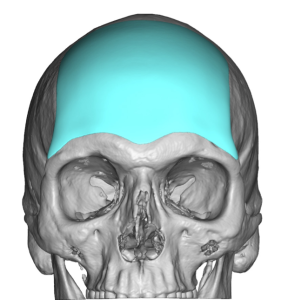
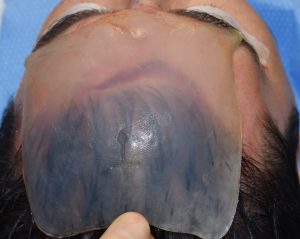

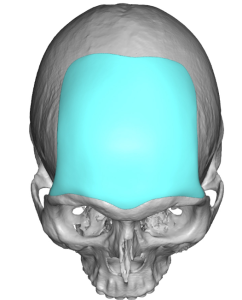
Case Highlights:
1) Decreasing the backward slope of the forehead is most reliably done with the least amount of incisional scar with a custom forehead implant.
2) The design and surface area coverage of a custom forehead implant must go further back onto the top of the skull that most patients realize.
3) In the male custom forehead implant its design stops short on going onto the brow bones, preserving a suprabrow bone break.
Dr. Barry Eppley
Indianapolis, Indiana



